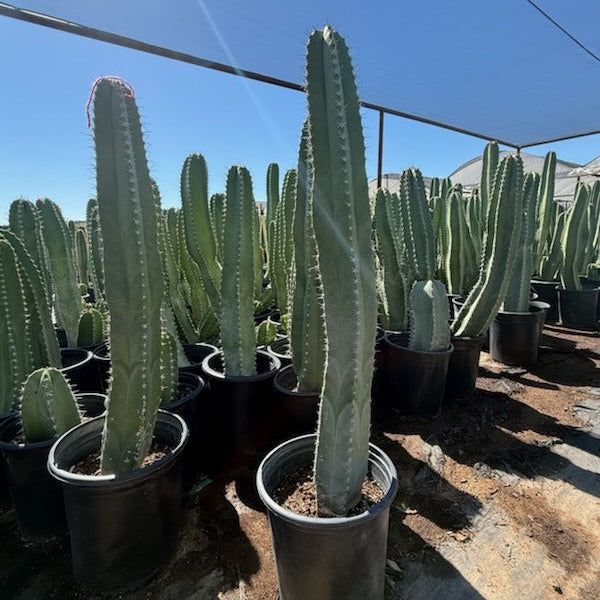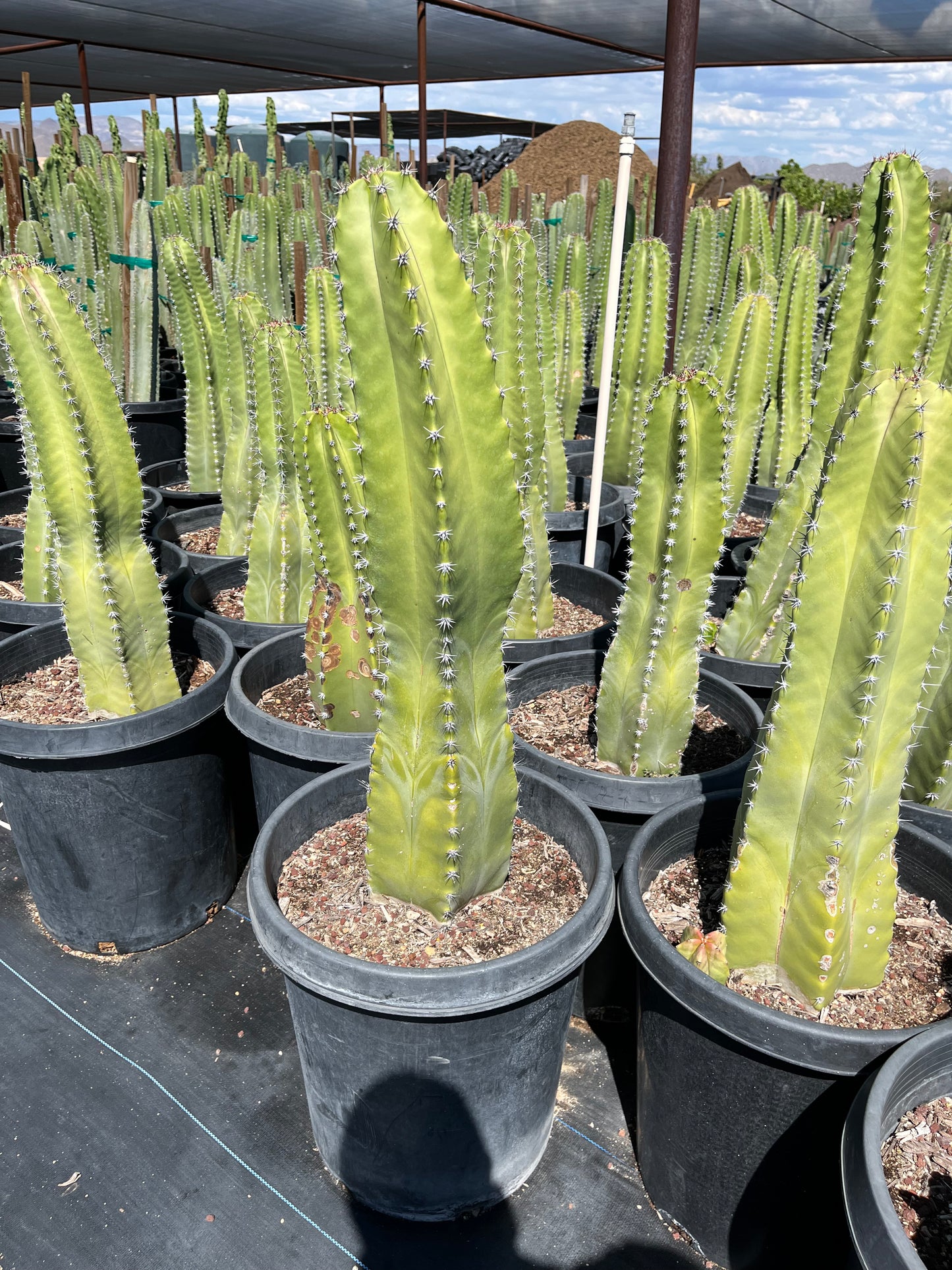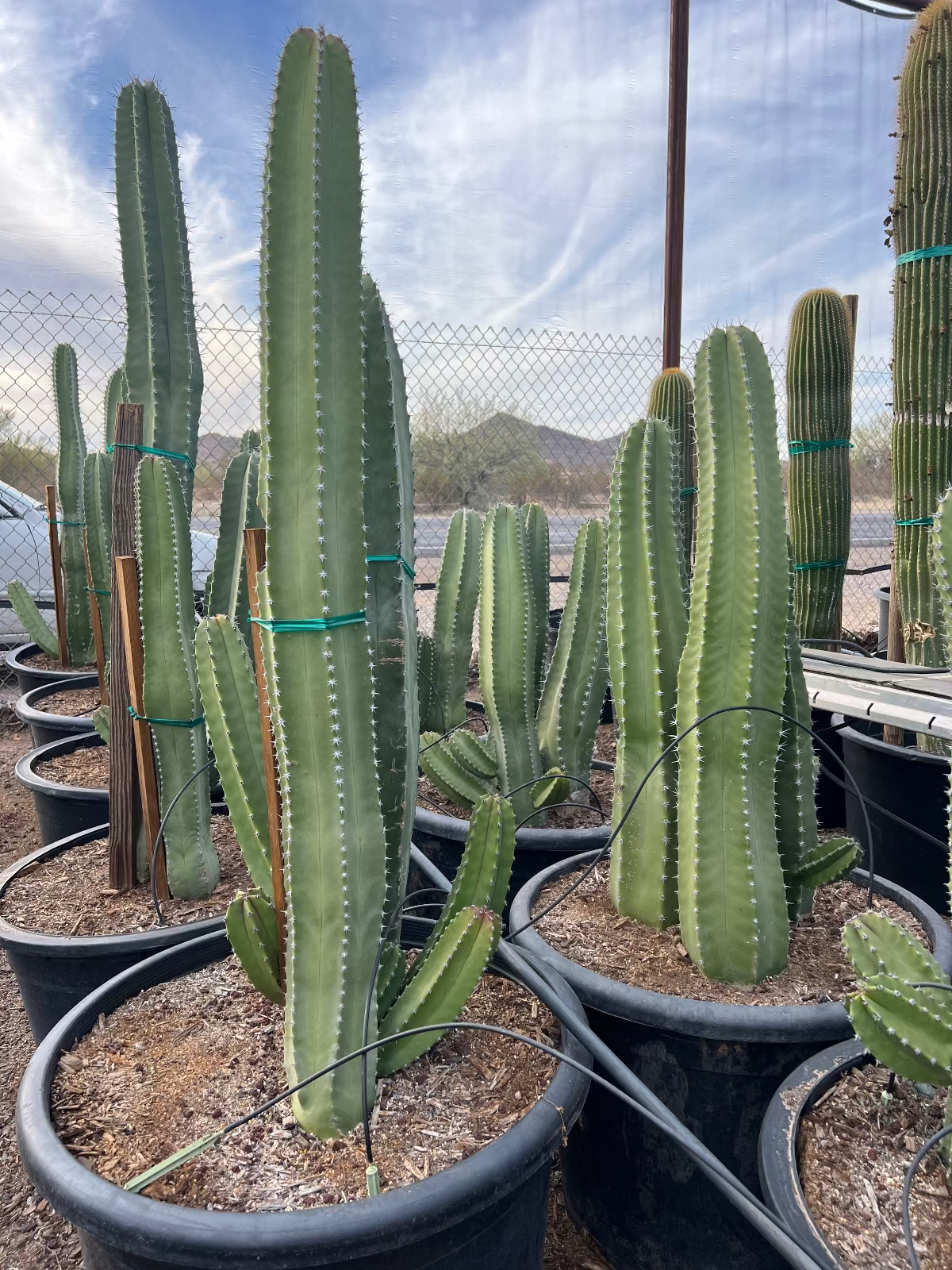My Store
Senita
Senita
Couldn't load pickup availability
Plant Type: Cacti
Plant Height: 6-15 feet
Spread: 4-6 feet
Flower Color: white or pale pink
Sun Exposure: Full Sun
Senita Cactus (Lophocereus schottii) – A Unique Desert Native for Phoenix Landscapes
The Senita Cactus, scientifically known as Lophocereus schottii, is a distinctive columnar cactus native to the Sonoran Desert, thriving in both Mexico and the southern United States. This upright cactus is perfect for adding a shaggy, sculptural element to Phoenix Valley gardens with its striking appearance and drought-tolerant nature.
Distinctive Shaggy Appearance and Growth
The Senita Cactus typically grows between 6 to 15 feet in height, forming multiple branching stems that grow both upward and slightly outward, creating a sprawling, vertical structure. Its stems are ribbed and covered in small spines, but its most eye-catching feature is the long, white hairs near the top of the stems, giving it a woolly, textured look that sets it apart from other cacti.
Night-Blooming Flowers and Edible Fruits
The Senita Cactus blooms with white or pale pink flowers, which open at night and close by morning—an adaptation to attract nighttime pollinators like moths and bats. These blooms are followed by edible red fruits, adding even more interest to this plant. The flowers and fruit enhance its biodiversity appeal, making it a valuable addition to desert gardens that attract wildlife.
Ideal for Phoenix Xeriscaping
This cactus is perfectly suited for the hot, arid climate of the Phoenix Valley. It thrives in full sun and requires well-draining soil to prevent root rot. Being a drought-tolerant species, it only needs occasional watering, making it an excellent choice for xeriscaping and low-water gardens in the area. However, it is not frost-tolerant, so in colder parts of the valley, it may need frost protection during the winter months.
Why Choose the Senita Cactus?
- Distinctive shaggy appearance adds unique texture and vertical interest to any garden
- Low-maintenance and perfect for drought-tolerant landscapes
- Night-blooming flowers attract nighttime pollinators, adding an ecological benefit to your garden
- Thrives in the Phoenix Valley’s sunny, dry climate, making it ideal for desert landscaping
- Versatile enough for use in rock gardens, accent planting, or as a focal point in desert gardens
Perfect for Phoenix Gardeners
Whether you’re looking to create a drought-tolerant landscape or add a sculptural element to your garden, the Senita Cactus offers an exotic, visually interesting option. Its woolly texture, nocturnal blooms, and low-maintenance needs make it a favorite among gardeners in the Phoenix Valley.
Three Timbers Installation Guide (Feel Free to Follow): Senita
Planting Guide:
- Location: Full sun (at least 6 hours of direct sunlight for optimal growth)
- Soil: Well-drained, sandy or loamy soil (slightly acidic to neutral soil preferred)
- Spacing: Space plants 4-6 feet apart for optimal growth and air circulation
- Planting Depth: Plant at the same depth as the root ball, ensuring the top of the root ball is level with the surrounding soil surface
- Support: Senita is a self-supporting cactus with a tall, columnar form and requires no staking
Watering Guide:
Watering After Planting:
- Initial Watering: Water thoroughly immediately after planting to saturate the root ball and surrounding soil
- Frequency: Water every 7-10 days for the first 2-3 weeks to help establish the root system
- Watering Amount: Provide 2-3 inches of water per session for deep watering
When is the Plant Established?
- Timeframe: Senita is considered established after 4-6 months when the roots have spread into the surrounding soil
Watering Once Established:
- Summer: Water every 14-21 days during the hotter months. If temperatures exceed 100°F, increase watering to every 10-14 days. Provide 2-3 inches of water per session.
- Winter: Water every 6-8 weeks during the cooler months, depending on rainfall.
Drip Irrigation Setup:
- Placement of Emitters: Place the drip emitters 18-24 inches away from the base of the cactus for deep watering
- Flow Rate: Use emitters with a flow rate of 1-2 gallons per hour
- Number of Emitters: 1 emitter per plant for even watering distribution
- Adjusting Frequency: In summer, increase watering frequency to every 10-14 days. In winter, reduce to every 6-8 weeks
Share
























